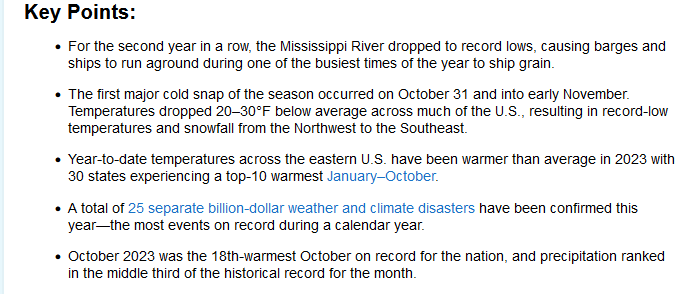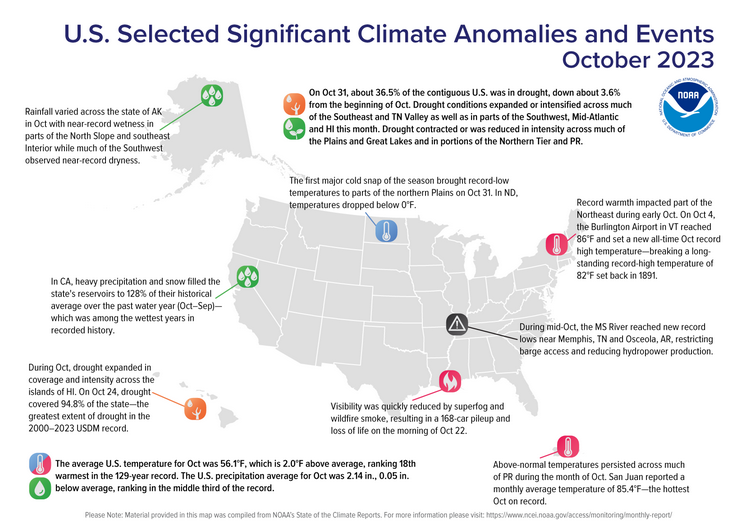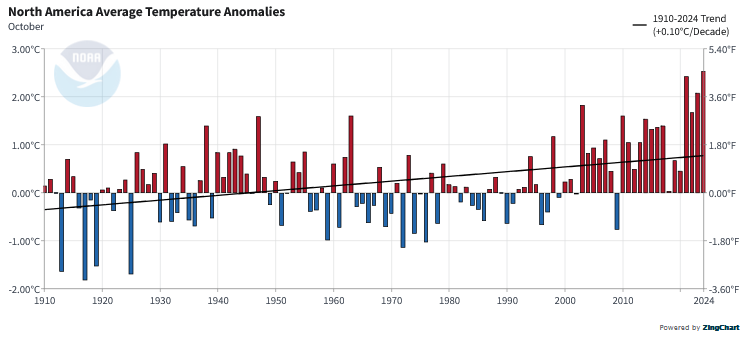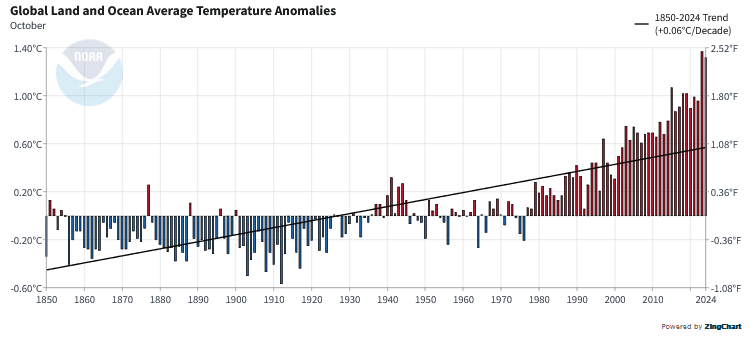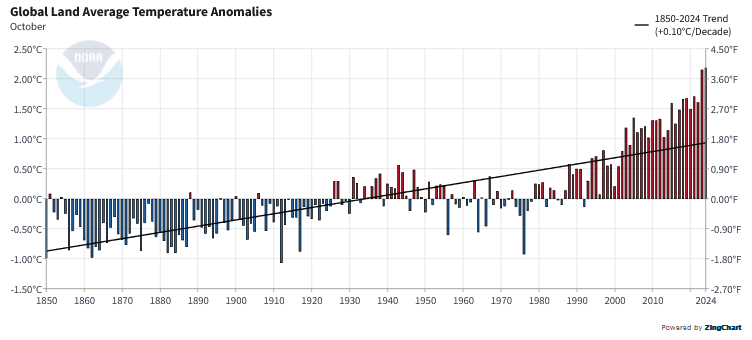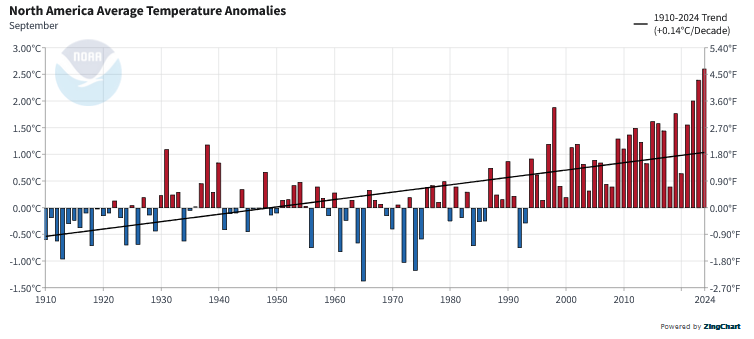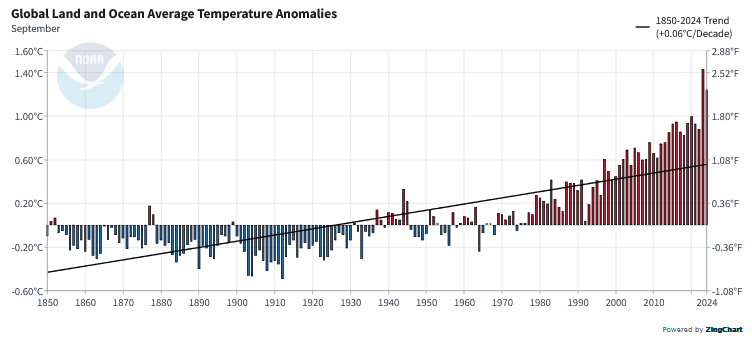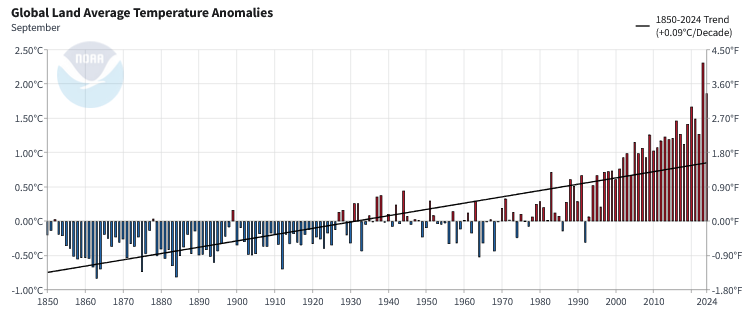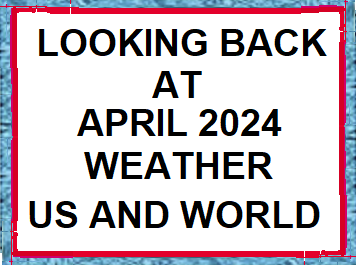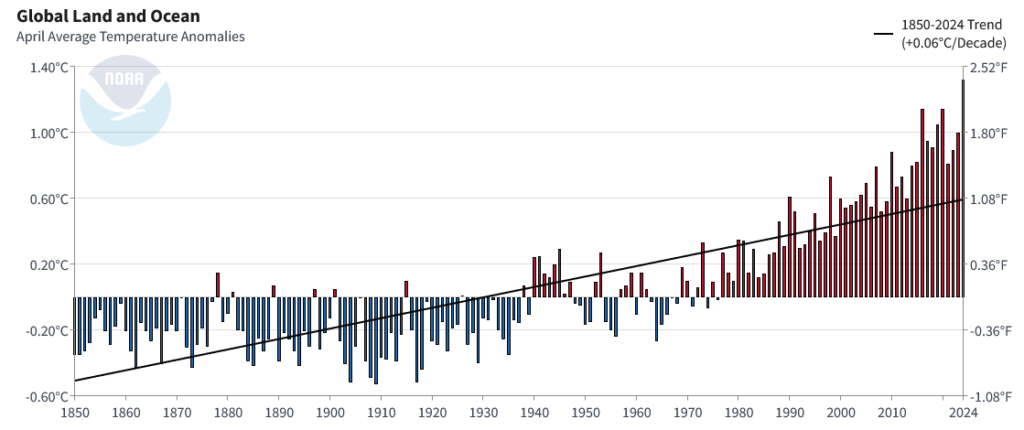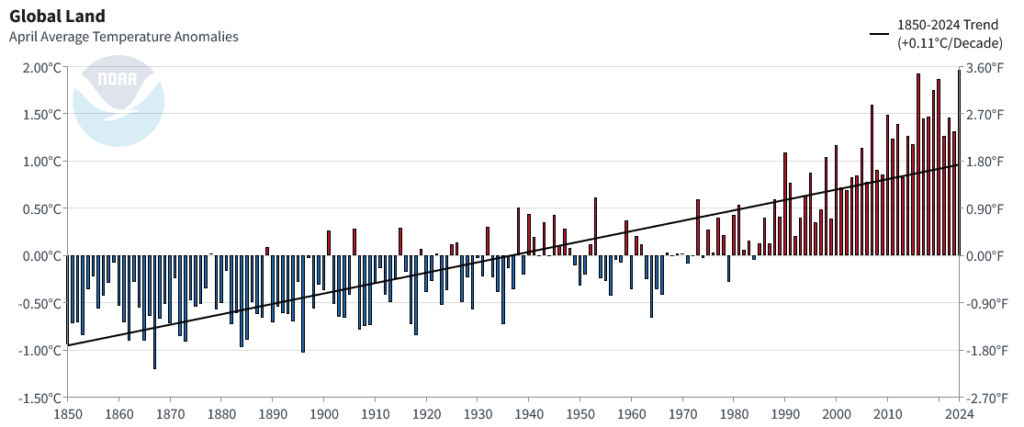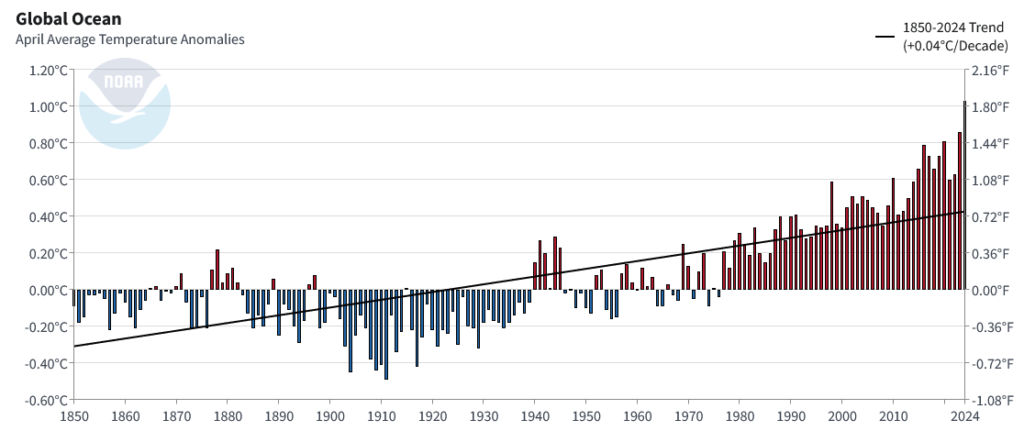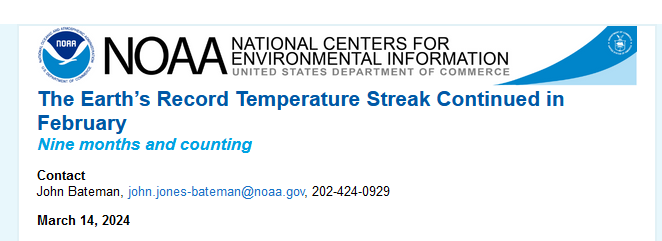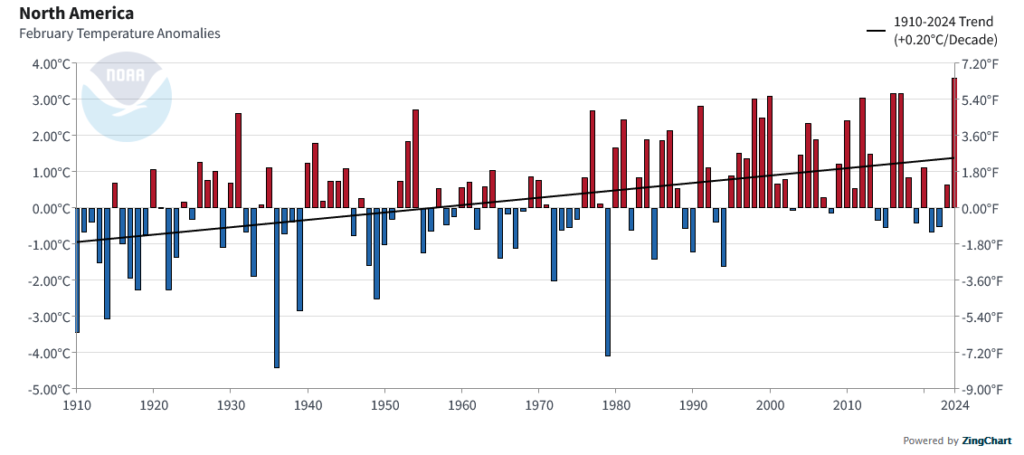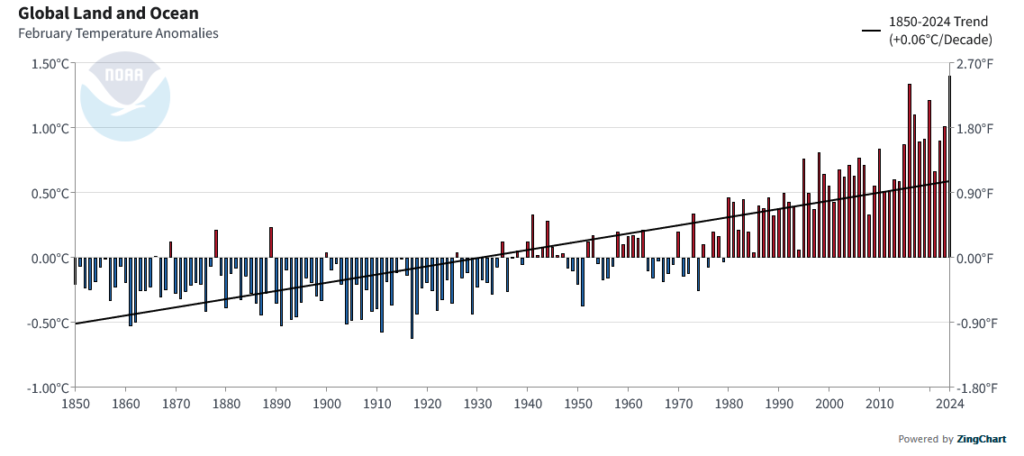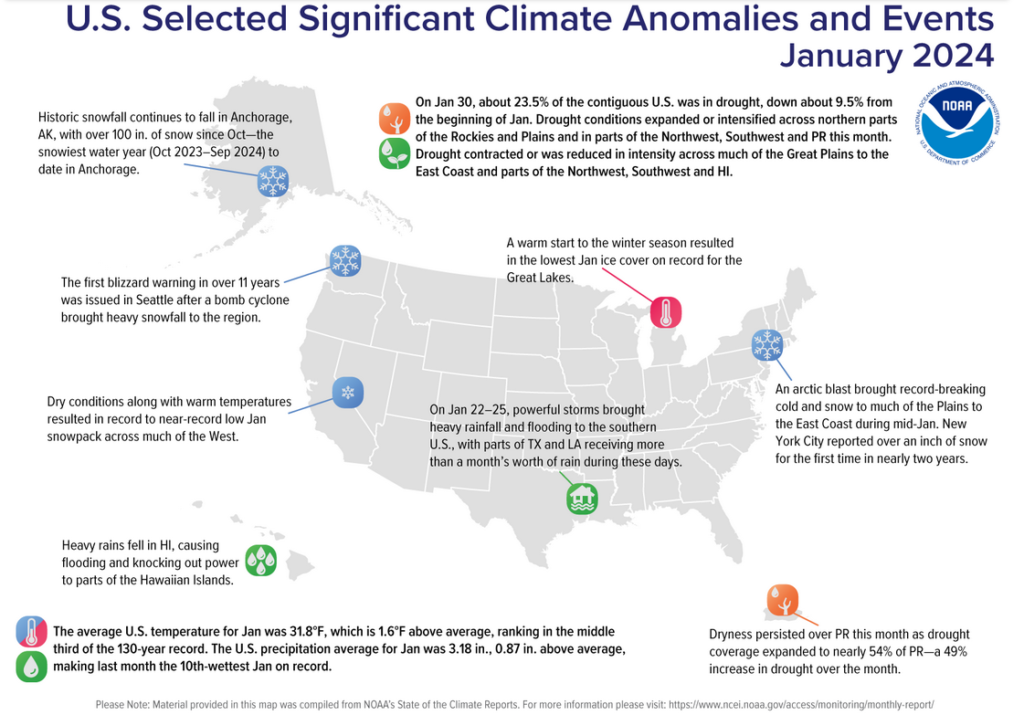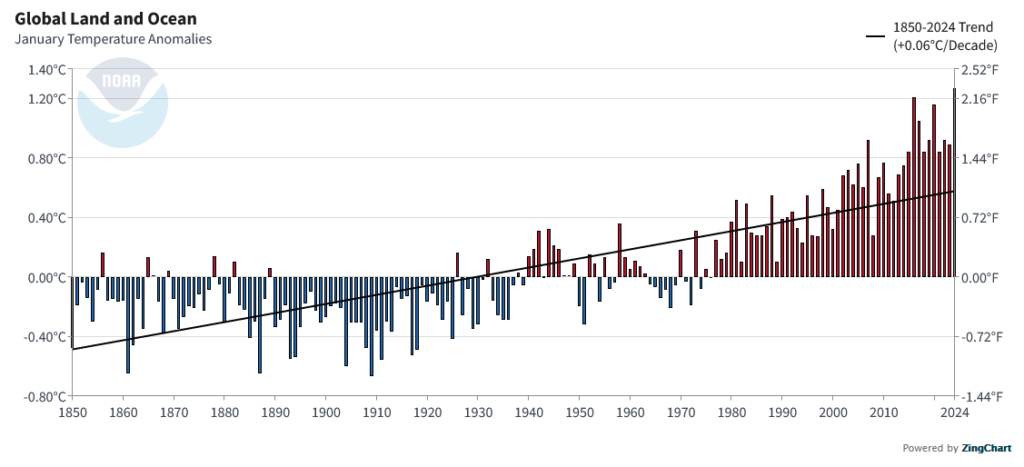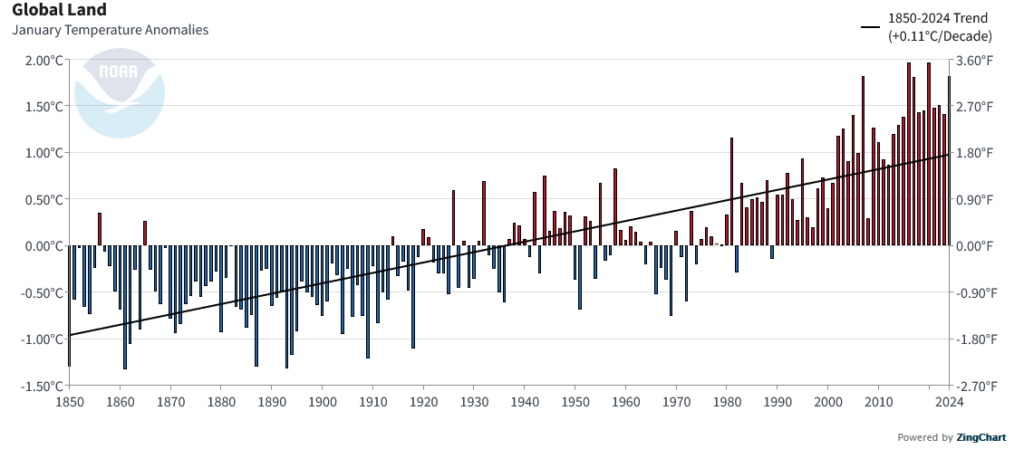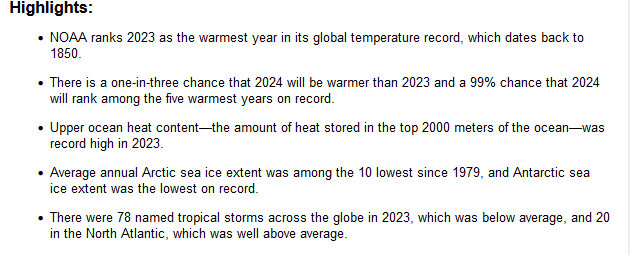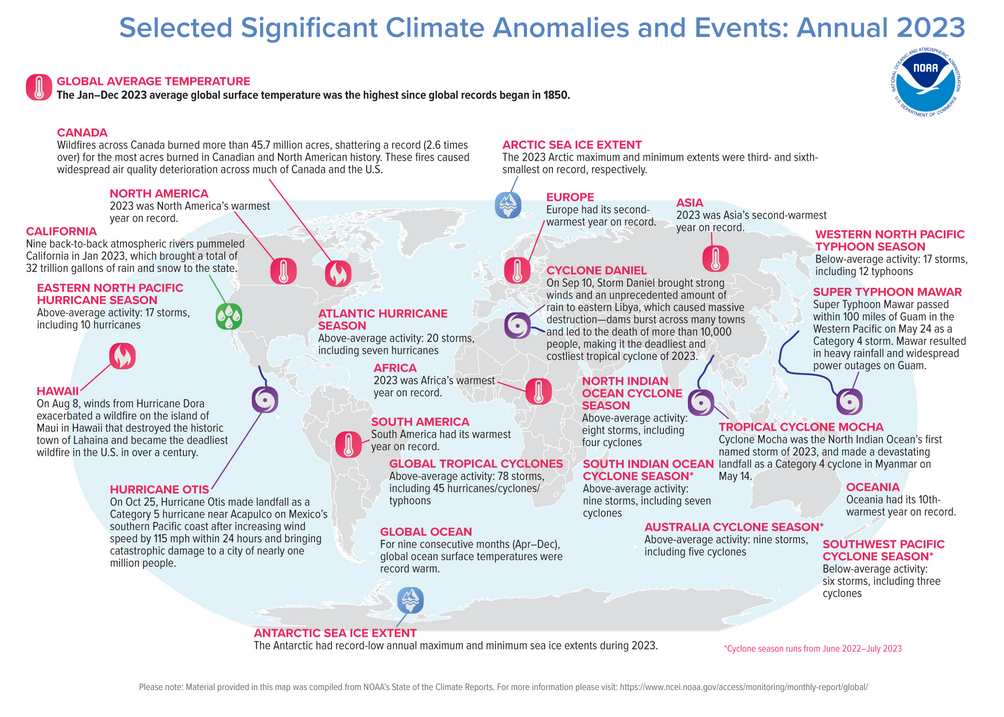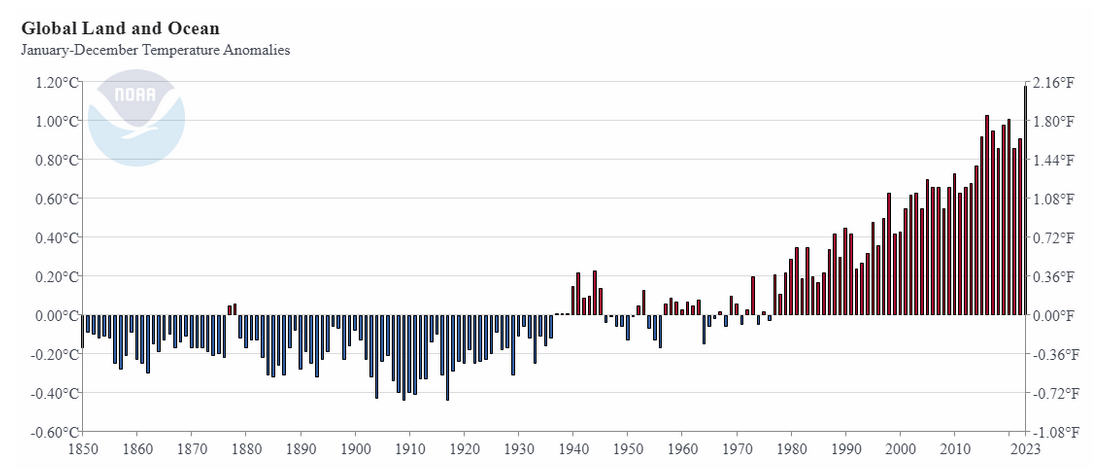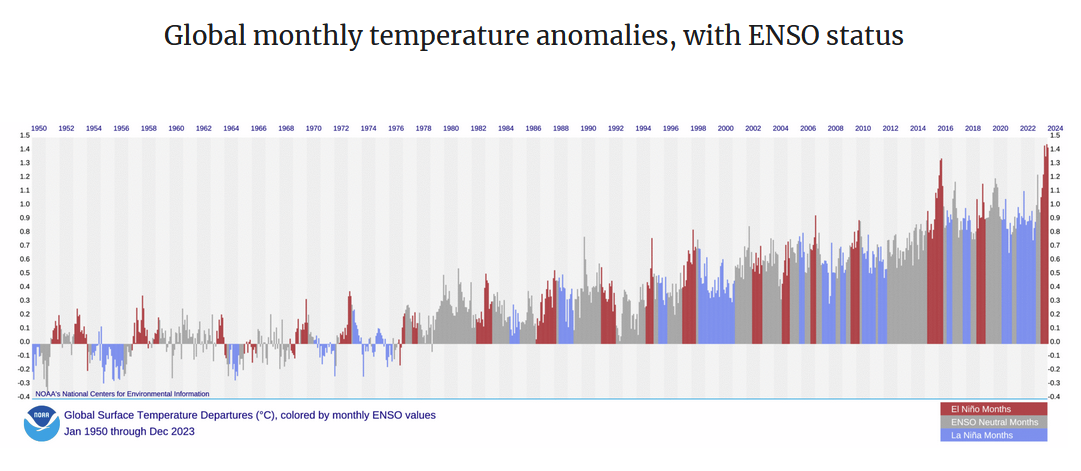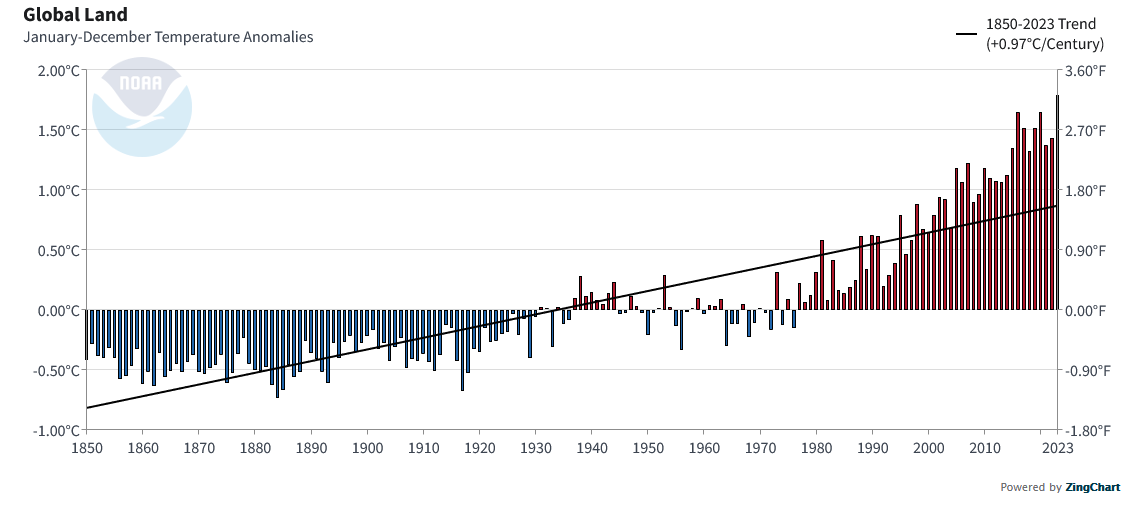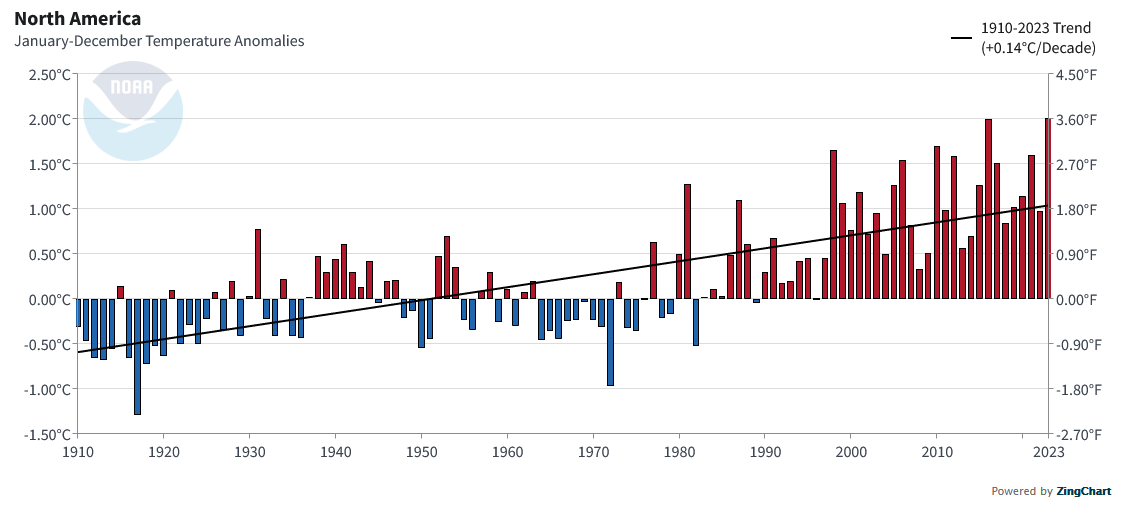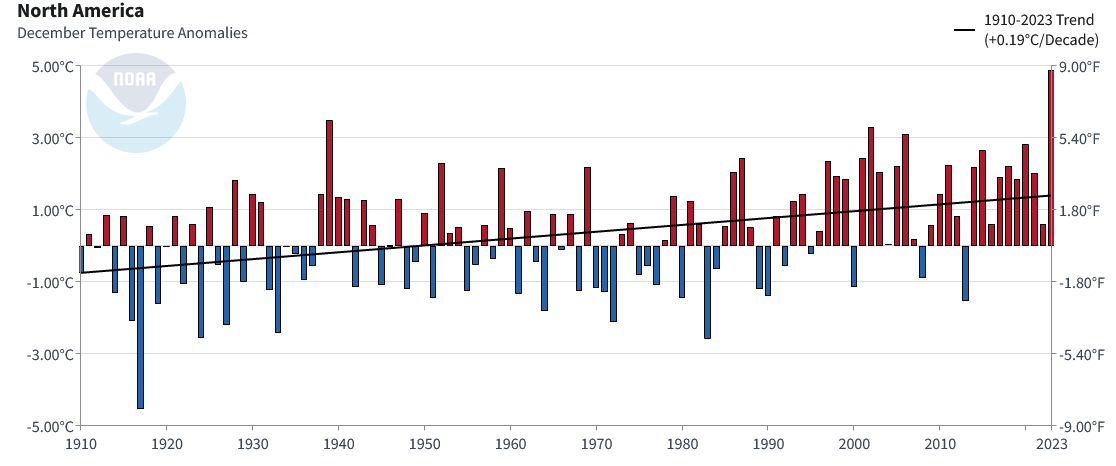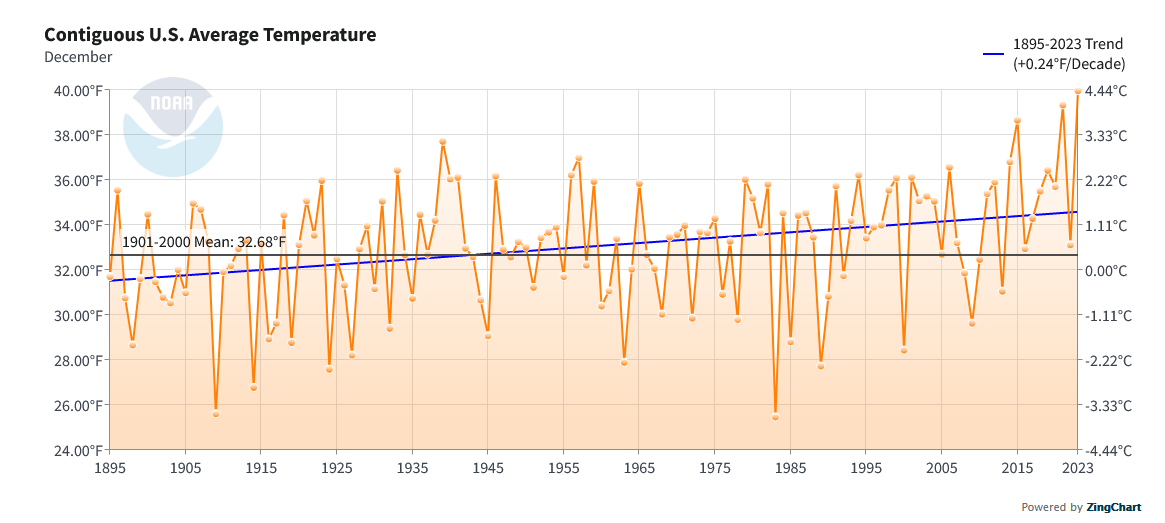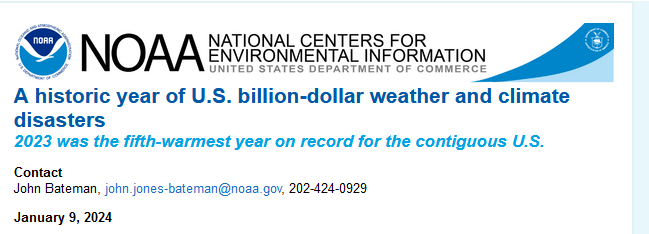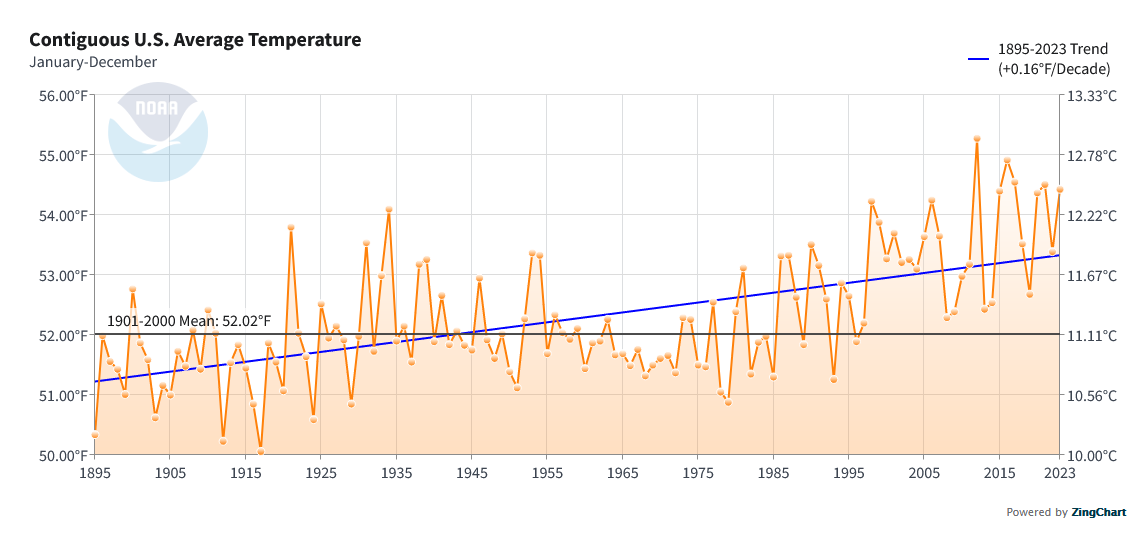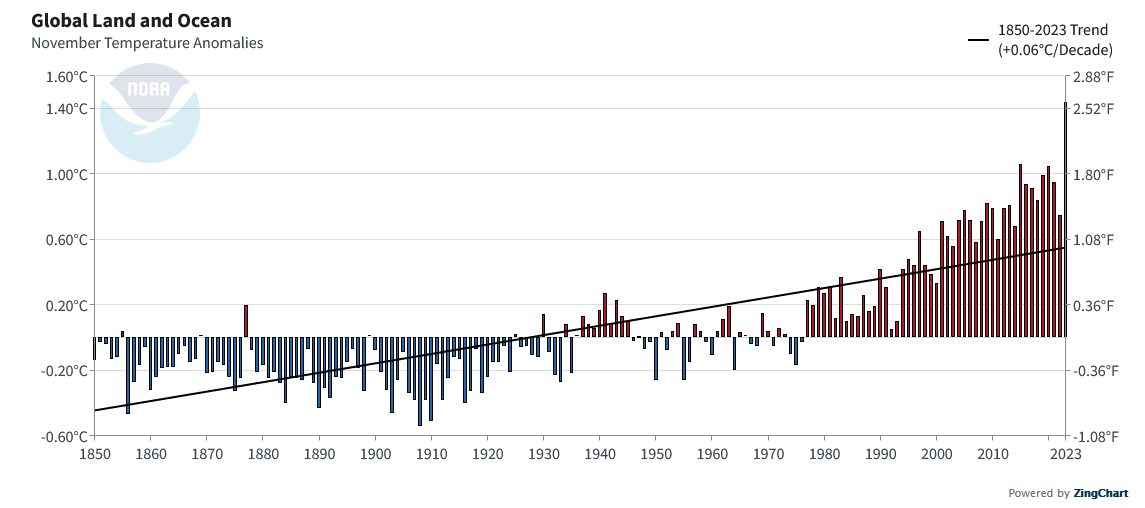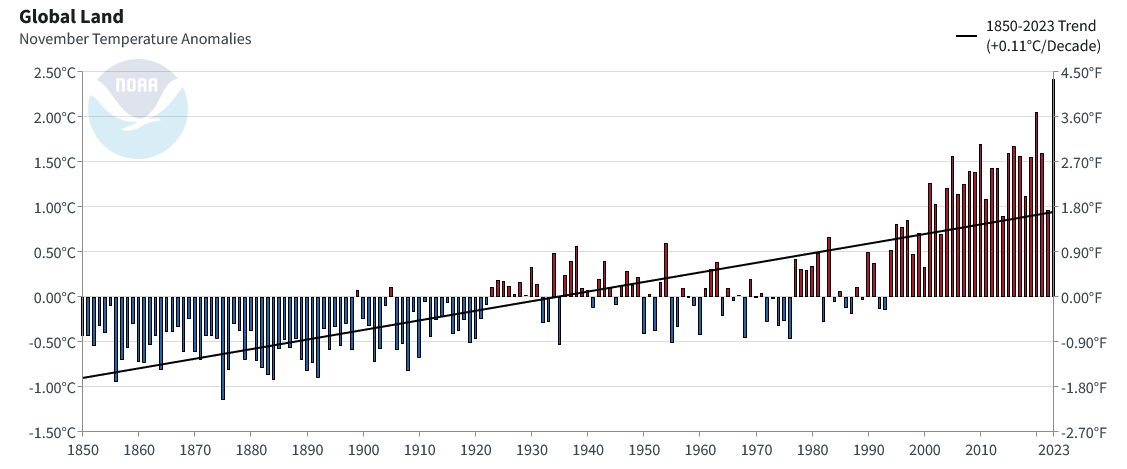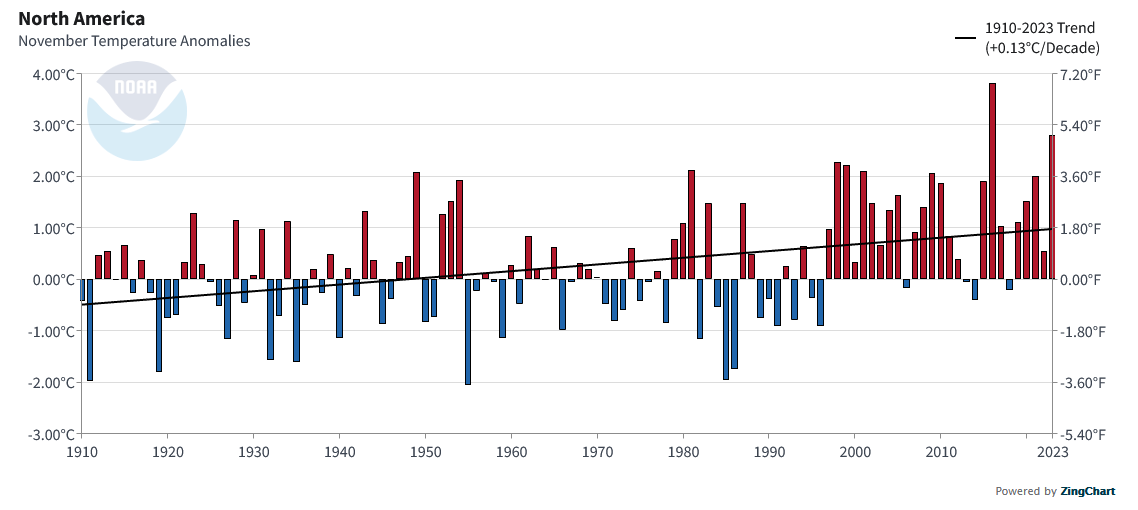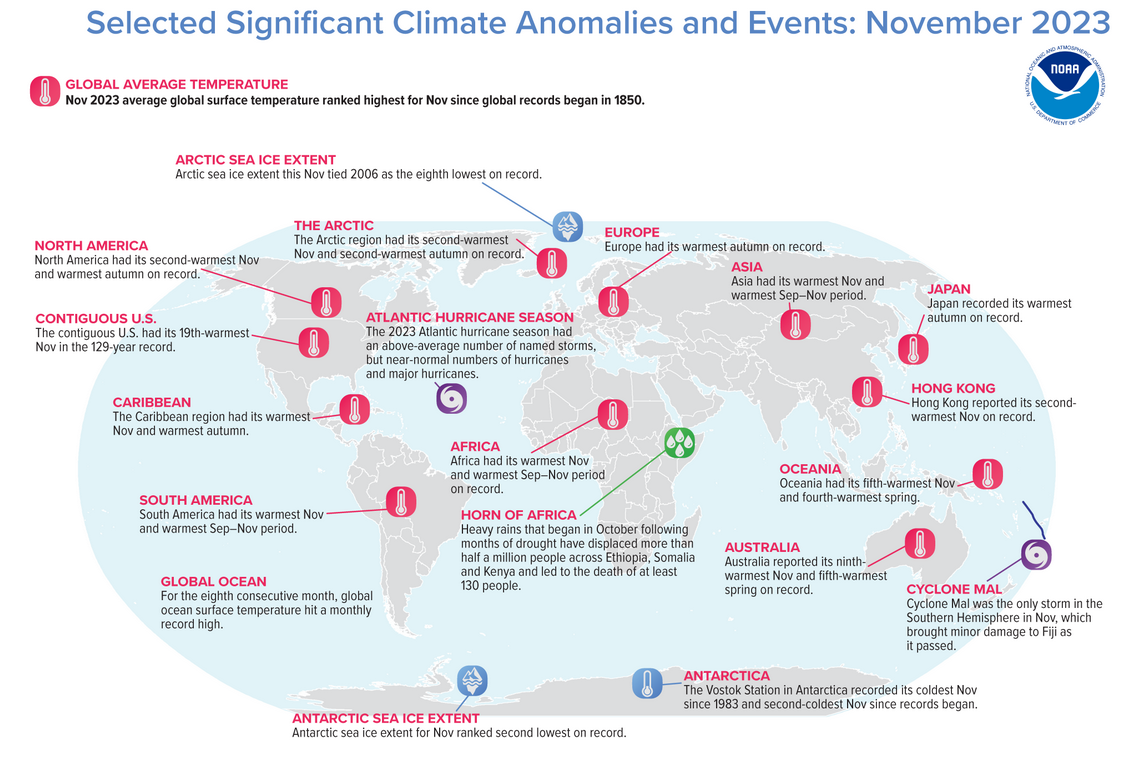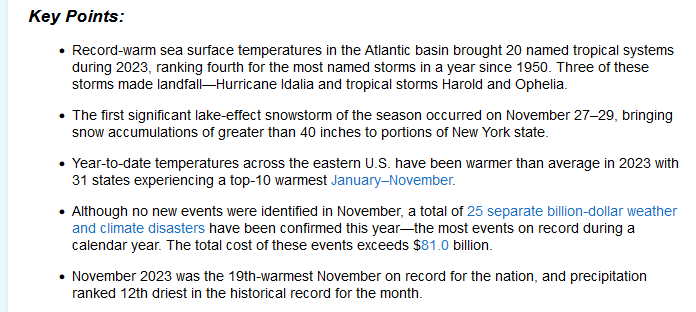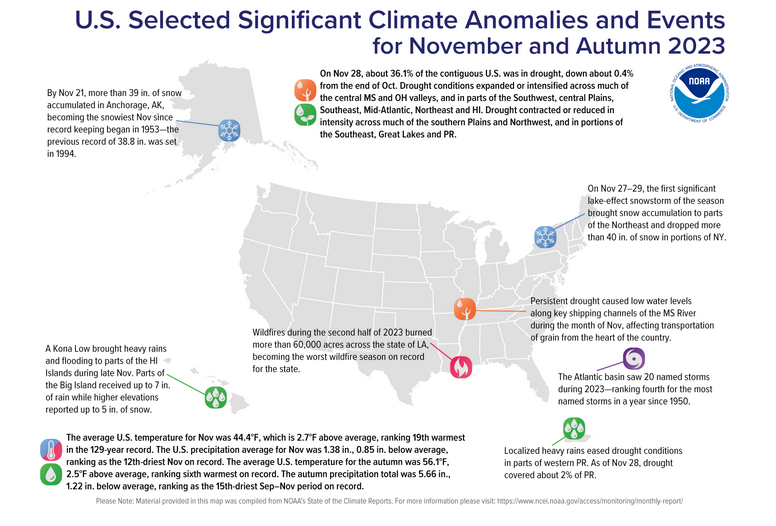Most of the information in this report comes from the monthly email I receive from John Bateman. He does public outreach for NOAA and in particular NCEI. I could find the same information and more on the NCEI website but John produces a good summary so I use it or most of it. I also sometimes add additional information from NCEI or other NOAA websites. John Bateman sends me two emails. One on the World situation and one for the U.S.
This article is about October 2023 in the U.S.

One of the things I like to add to what John Bateman sends me is the state ranking maps. These maps show how temperature and precipitation for each state rank relative to the 129 years of what is considered to be the most reliable data we have.

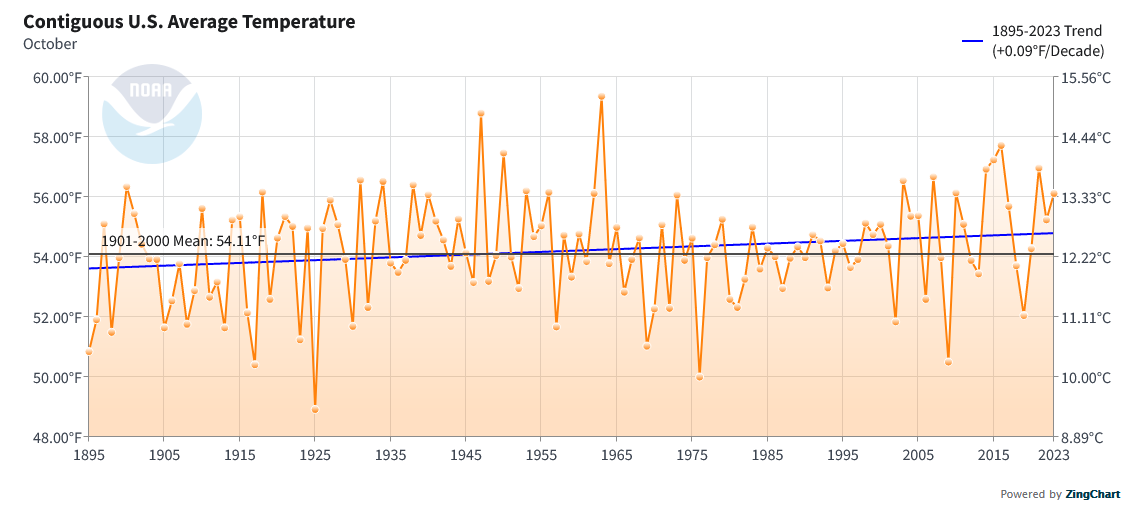
| This is the U.S. October temperature trend. This past October was by no means a record but it was above the trend line. It was a relief in a way as recent months have been much above trend and record breakers so the factors that were causing that may have been short-term but in any event did not show up this October. I am unable to compare this to the world trend as it is not yet available but will be soon. |
Now I will present the information provided by John Bateman with perhaps one additional graphic also from NCEI.
